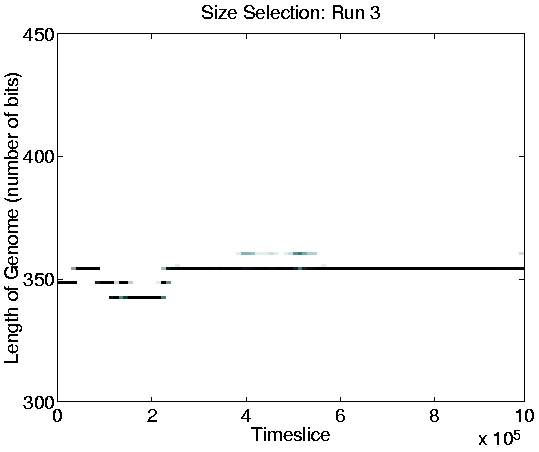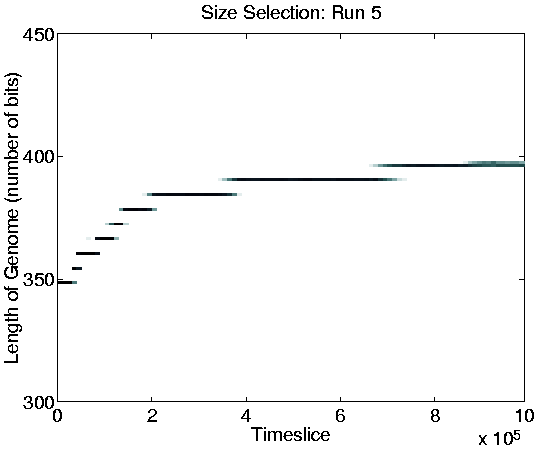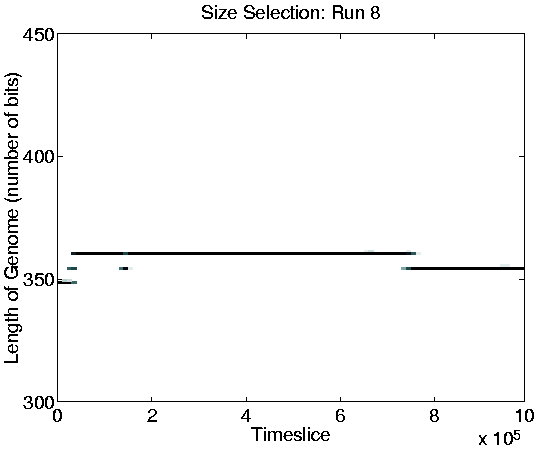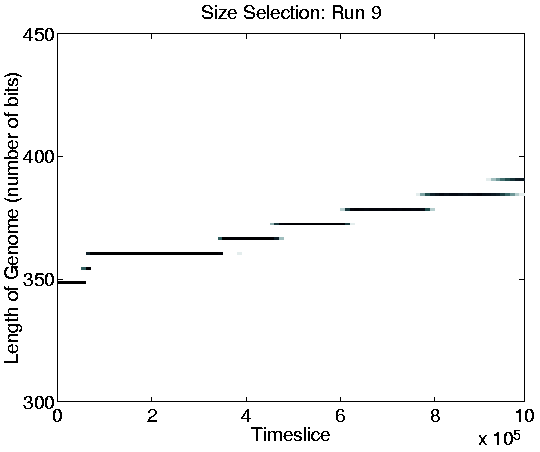



|
In each of the nine runs, the program length (and the replication period) of the programs still showed a net increase from the beginning to the end of the run, but the increments were fairly gradual. The smallest end-of-run dominant program length seen in any of the runs was 354 (Run 8), the largest was 402 (Run 1), and the average was 375. Plots of program length from four of the runs are shown in Figure 6.16. Analysis of individual programs revealed that the increase in size was due largely to the accumulation of energy collection instructions within the programs' copy loops.